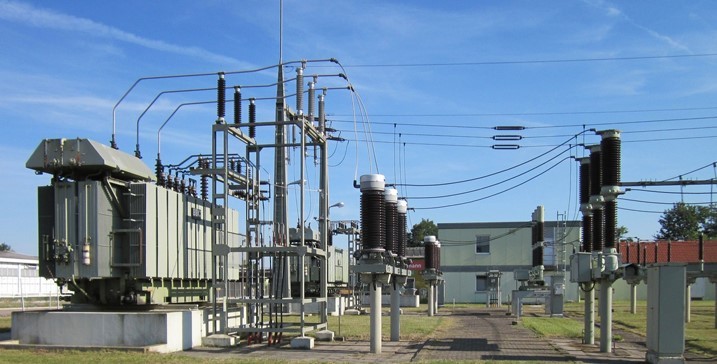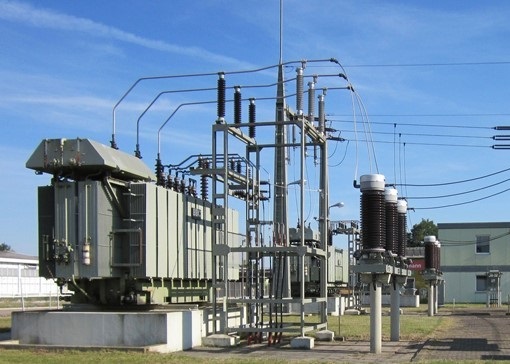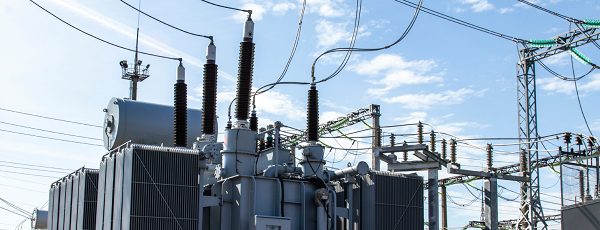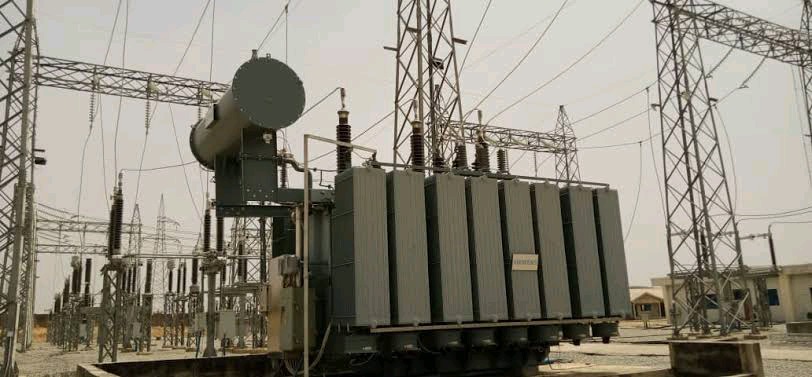Transformer Parallel Operation
INTRODUCTION:
- Parallel operation of transformer means HV and LV of two (or more) transformers are connected to the source busbars and load busbars respectively.
- According to the standard IEC 60076 – 8, parallel operation means direct terminal-to-terminal connection between transformers in the same installations.
NEED FOR PARALLEL OPERATION OF TRANSFORMERS:
The need for parallel operation of transformers arises
- To cater additional load when the transformer rating is exceed
- To maximize the availability, reliability, and flexibility of the power system during design
Availability: When any one of the transformers is taken out for maintenance purposes, other transformers connected in parallel operation will meet the demand of the load without any service interruption.
Reliability: If any one of the transformers running in parallel is tripped due to fault, then the remaining transformers will share the load. So the power supply won’t be interrupted if load demand in that scenario does not make the transformers overloaded.
Flexibility: If power demand will be increased in the future, there must be a provision of connecting transformers in the system in parallel to fulfill the extra demand, Again if future demand is decreased, transformers running in parallel can be removed from the system to balance the capital investment and its return.
Conditions for Parallel Operation of Transformer:
- Same Voltage Ratio/Turns Ratio
- Same Vector Group
Same Voltage Ratio:
If the transformers connected in parallel have slightly different voltage ratios, then due to the inequality of induced emf in the secondary windings, a circulating current will flow in the loop formed by the secondary windings under the no-load condition. The current will be quite high as the leakage impedance is low. When the secondary windings are loaded, this circulating current will tend to produce unequal loading on the two transformers, and it may not be possible to take the full load from this group of two parallel transformers (one of the transformers may get overloaded).

Ea = Induced EMF of Transformer 1
Eb = Induced EMF of Transformer 2
Za = Actual Impedance of Transformer 1
Zb = Actual Impedance of Transformer 2
Case 1: Different Voltage Ratio
Let’s consider 2 No’s of 25 MVA, transformer are connected in parallel, where the Transformer 1 has a voltage ratio of 66/11 kV and Transformer 2 has the voltage ratio of 66/11.5 kV and load is given as 40 MW at unity p.f., and both transformers impedance are assumed as 10% according to the standard IEC 60076-5.

Inference: Due to different voltage ratios, the circulating current of 335 Amps flowing in between the secondary side of transformers (Transformer 2, LV side voltage (11.5kV) is slightly higher than Transformer 1 LV side voltage(11kV), so circulating current is flowing from Transformer 2 to Transformer 1). Hence at 11 kV bus, voltage is raised to 11.281 kV and also reflected circulating current of 56 Amps flowing in between the primary side of transformers.
Case 2: LTC Operation in Transformer Parallel Operation
Let’s consider 2 No’s of 25 MVA, +- 10% tap range transformer are connected in parallel, where the Transformer 1 has a voltage ratio of 66/11 kV operating at 1% min tap and Transformer 2 has the voltage ratio of 66/11 kV operating at 2% min tap and load is given as 40 MW at unity p.f., and both transformers impedance are assumed as 10% according to the standard IEC 60076-5.

Inference: Due to maloperation of LTC, transformer 1 LV side voltage is 11.11 kV and transformer 2 LV side voltage is 11.22 kV. So 79 Amps of circulating current flows in the secondary side of both the transformers. In reality, there will be a Master-Follower methodology for LTC operation using auxiliary relays to avoid circulating current.
Master – Follower Method:
- The master–follower/master-slave method is just what the name says. This method’s sole intent is to bring the tap changer on the follower transformer to the same tap position as for the master.
- By keeping the transformers on the same tap, there is no circulating current and there will be no significant losses except for the few seconds while the tap change is being accomplished.
- The method requires that the transformers be identical as to the numbers of taps and tap-step size as each action of the master is duplicated by the follower, and unequal turn ratios of the transformers would lead to continuing circulating current.
- The method is usually implemented using auxiliary relays which command the follower to follow an action of the master and then will not permit a subsequent action of the master until a feedback signal is received from the follower confirming that it has operated and is ready to receive another command from the master.
Same Vector Group:
The phase sequence of line voltages of both the transformers must be identical for the parallel operation of three-phase transformers. If the phase sequence is incorrect, in every cycle each pair of phases will get short-circuited. This condition must be strictly followed for the parallel operation of transformers.
Example: Let’s consider 2 No.s of 25 MVA, 66/11 kV transformer are connected in parallel, where the impedance of both transformers are assumed as 10% according to IEC 60076-5. Vector group of T1 is Dyn1 and the Vector group of T2 is Dyn7.

Inference: Only transformer having the same phase displacement between primary and secondary can operate in parallel. In the above example, due to different phase displacement there is a flow of circulating current in the network.
Calculation for determining circulating current:

Advantageous Conditions for Parallel Operation of Transformer:
- Same Impedance
Same Impedance:
The current shared by two transformers running in parallel should be proportional to their MVA ratings.
The current carried by these transformers are inversely proportional to their internal impedance.
- From the above two statements, it can be said that the impedance of transformers running in parallel are inversely proportional to their MVA ratings. In other words, percentage impedance or per unit values of impedance should be identical for all the transformers run in parallel.
- Clearly, if the transformers are matching, especially for this point of discussion that they exhibit the same impedance, there will be an equal division of load current in them when the tap changers are operating on the same tap position. If the condition is not met, the transformer will not share the equal load according to its MVA rating.
Example: Let’s consider 2 No.s of 25 MVA, 66/11 kV transformer are connected in parallel, where the impedance of both transformers are assumed as 10% according to IEC 60076-5 in Case 1.
Case 1:

Inference: From the above network, we can clearly say that connecting transformers in parallel with the same parameters results in equal load sharing (percent impedance of both transformers are identical on their own MVA base rating).
Practically, manufacturing two similar rated transformers with the same value of impedance on their own MVA base rating is quite difficult to do it.
According to IEC 60076-1, the tolerance on specified short-circuit reactance for a new transformer at the principal tapping is 7.5 % to 10 % of the declared value.
Case 2:
Impedance of Transformer 1 is assumed as 9% and Impedance of Transformer 2 is assumed as 11%. Connected load demand is 40 MW, at unity power factor.

Inference: From the case 2 results, it is clearly stated that impedance mismatch can cause significant load unbalance among transformers. Transformer 1 with 9% impedance is loaded(88.56%) heavily than Transformer 2 (72.46%) with 11% impedance.
For parallel operation, transformer MVA rating not necessarily has to be the same. Let see what happens when transformers rating are not identical.
The current shared by two transformers running in parallel should be proportional to their MVA ratings.
If two or more transformers are connected in parallel, then the load sharing percentage between them is according to their rating. If all are of the same rating, they will share equal loads. Transformers of unequal MVA ratings will share a load practically in proportion to their ratings, providing that the voltage ratios are identical and the percentage impedances (at their own MVA rating) are identical, or very nearly.
Example: Let’s consider transformer 1 rating is 25 MVA and transformer 2 rating is 35 MVA. Both transformers having the same impedance and same voltage ratio of 10% and 66/11kV respectively.

Inference: In the above case, both transformers are loaded equally (i.e.) loading percentage is similar for the transformers because p.u. impedance is equal in both transformers. Since the actual impedance of both transformers are not identical because transformer MVA ratings are different (Transformer 1 has 0.484 ohms on 25 MVA base and Transformer 2 has 0.345 ohms on 35 MVA base), hence 35 MVA rated transformer 2 shares 58.34% of load (27.451 MVA) compared to 25 MVA rated transformer 1 which shares 41.67% of load (19.6 MVA).
Conclusion: As an overall conclusion, the important conditions are mandatory that should be followed when going for the parallel operation of two (or more than two) transformers. Whereas, the advantageous conditions/convenient conditions are not met, still parallel operation is possible, but not optimal.





Hi this is very useful indeed. Please share this article in pdf for ease of future reference
Excellent write post on short circuit ratio its interpretation in different rotary machines.
Could you please advise and elaborate how to get value of Voltagediff >>>> 6350.853 Volt
Thank you